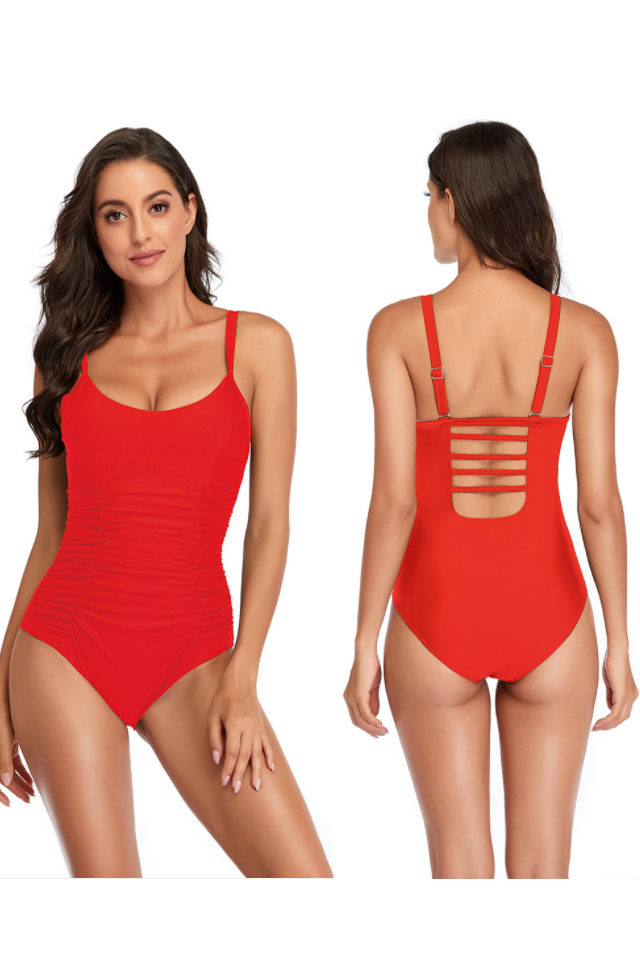Free Shipping plus 9% off Wetsuits. Use Code: DIVE9
Views: 10 Author: Site Editor Publish Time: 2021-05-29 Origin: Site

If you are into any water sports or exploration, there likely has come a time when you have had to put on a wetsuit. Did you wear something underneath, or you went for it nude? Many diving and watersports first-timers usually struggle with what to wear under a wet suit.
There is no straightforward answer about what you should wear under a wetsuit. You can choose to wear a bikini, leggings, boardshorts, and speedo-style suits. It's also okay to wear nothing as it's all about personal preference. You should know that wetsuits are designed to keep your body warm underwater. Some scuba diving gurus advise that you wear nothing under a wetsuit for it to perform its purpose optimally. Wetsuits are designed to feel comfortable on the body even when you are not wearing anything or wearing something.
If you are into surfing and general watersports, you can wear anything from swimsuits for ladies and speedo-style suits, rash undershorts, or boardshorts. On the other hand, if you partake in triathlons, wearing speedo style suit underneath will offer an effortless transition from swimming to biking. As a pro-scuba diver going for a cold dive, a poly fleece base layer or a full-body rash guard under a thick suit is a good option.

If you are still new at scuba diving, there are times that you might feel like you still feel cold even with a wetsuit. You should know that there are primarily two kinds of wetsuits, the normal ones and the thicker ones. The normal ones have a standard thickness, while the thicker ones, just as the name suggests, are thicker. The former is used for diving into warm water, while the latter is preferred for cold water.
Most of the wetsuits are made from neoprene, a type of synthetic rubber. You should know that wetsuits aren't meant to shield you from getting wet; rather, they keep you warm. If you want a diving suit to keep you dry, you should go for a dry suit.

A wetsuit preserves a thin layer of water between it and your body. This layer of waterworks as the first level of insulation. Keep in mind that a wetsuit should fit your body as snugly as a glove for this insulation to work best. If you go for a suit that's too tight, it might hinder blood circulation to some parts of your body.
The snuggly fit means only a thin layer of water sits between the body and the wetsuit, and thus, it can quickly be warmed up by your blood's warmth. Neoprene also has some insulating properties that prevent the warm thin layer of water around your body from losing heat. The material of the wet suits acts as the second level of insulation. Studies have revealed that the body can lose heat up to 25 times faster than on land while in water.
Now that you have a wetsuit on, what should you expect when you get into the water? Firstly, there is the initial chill as the wetsuit absorbs the thin layer of water, and it gets in contact with your skin. After a moment, you will start feeling warm as your body will have heated up the thin layer of water. The insulating properties of neoprene will kick in to preserve this warmth.
If you are wearing a baggy wet suit, you can expect to experience flushing as the gaps between your skin and the suit are too big. The flushing problem will worsen if the suit is lose around the neck, ankle, and wrists.
Wetsuit-flushing occurs when cold water enters a loose-fitting suit and flushes out the warm water that was insulating you. This means that your body will be exposed to cold water, and this can affect your performance. If the suit is loose around the neck, ankle, or wrists, the more water can get in as these become entry points. More water will keep entering your wetsuit before the one present is well heated up, and this means that your body will keep losing heat the more you stay underwater.
The neoprene-made wetsuits use a particular type of material known as foamed neoprene. In this case, the synthesized rubber is passed through a process known as foaming to thicken it. The foaming process introduces pockets of nitrogen gas in the neoprene. Nitrogen is a poor heat conductor, and this makes the neoprene wetsuit a perfect thermal insulator. Keep in mind that synthesized rubber is by itself if a good thermal insulator. Through heat transfer still occurs when wearing a neoprene wetsuit through diffusion, the presence of nitrogen gas makes the process significantly slower.
Thickness: - Pick the suit you want with the temperature of the waters that you will be frequenting in mind. You want a thicker wetsuit if you dive frequently in cold waters and a standard one if you spend most of the time in warm waters.
Zipper: - The zipper is an integral part of a wetsuit. It's best that you go for a suit with a zipper that makes it easy for you to get in and out of it. For some people, chest zip wetsuit is better than a back zipper as it offers improved back flexibility and is more water-tight. Moreover, it enables you to quickly zip and unzip yourself.
Unsealed vs. Sealed: - The more affordable wetsuits are usually unsealed. This means that during the stitching of the seams, they were glued to make them water-tight. You should go for sealed wetsuits with the tape placed on top of the glued seams to make them more water-tight.
Whatever water activity you will be using your wetsuit for, make sure that you observe all the safety precautions related to it. This means that you can enjoy the action without the risk of harm or injury.
Also of Interest: